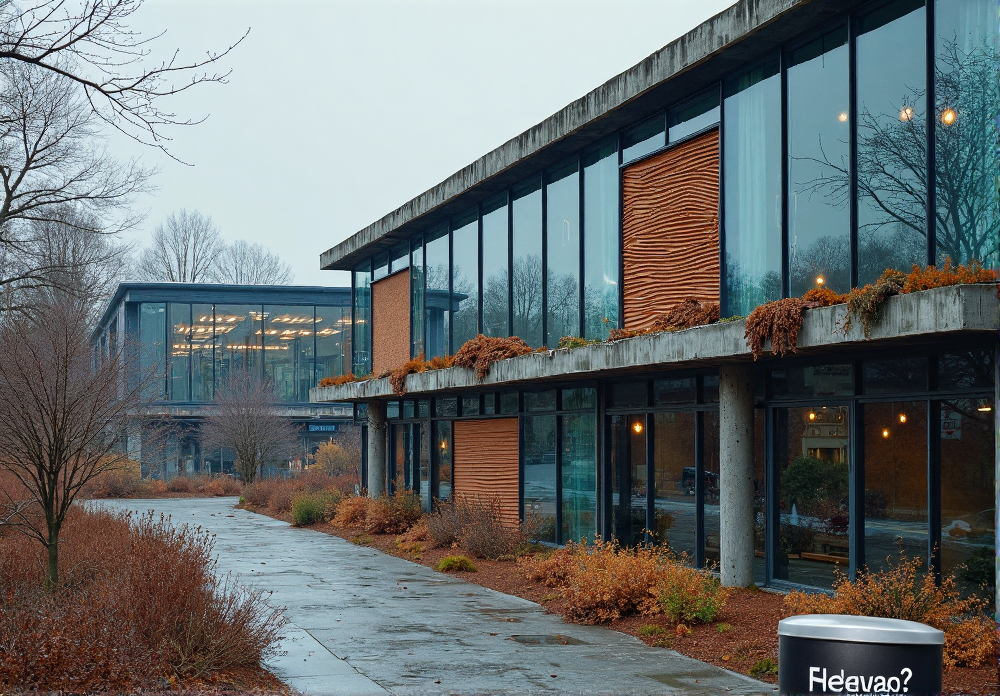In the ever-evolving tapestry of urban development, a new thread has emerged, weaving its way through the fabric of our cities with increasing prominence: electronic waste. As our societies hurtle towards an increasingly digitized future, the specter of discarded devices looms large, casting long shadows across our urban landscapes. This article delves into the profound impact that discourse surrounding electronic waste, particularly through influential quotes, has had on urban planning and architectural design. By examining these verbal touchstones, we can trace the evolution of thought that is reshaping our cities and redefining our relationship with technology and space.
The Awakening: E-Waste as an Urban Catalyst
The journey begins with a stark realization, encapsulated in a quote by Achim Steiner, former Executive Director of the United Nations Environment Programme:
“E-waste is the fastest growing waste stream in the world. It is a global challenge that demands a global response.”
This statement, delivered at a 2015 conference on sustainable development, serves as a clarion call that has reverberated through the halls of urban planning departments and architectural firms worldwide. It underscores the urgency of addressing e-waste not as a peripheral issue, but as a central concern in the design and development of modern cities.
The implications of Steiner’s words are far-reaching. Urban planners, once primarily concerned with traditional waste management systems, now find themselves grappling with the unique challenges posed by electronic detritus. This has led to a fundamental shift in how cities are conceptualized, with e-waste management infrastructure becoming as crucial as roads and sewers in urban blueprints.
Architectural Metamorphosis: From Disposal to Design
As awareness of the e-waste crisis grew, so too did the architectural response. A particularly poignant quote by William McDonough, the renowned architect and co-author of “Cradle to Cradle,” has become a mantra for a new generation of designers:
“Waste equals food.”
While not specifically about e-waste, this philosophy has been eagerly adopted by architects tackling the electronic waste challenge. It has sparked a revolution in building design, where structures are no longer seen as static entities but as dynamic systems capable of processing and repurposing e-waste.
This paradigm shift is evident in projects like the E-Waste Recycling Center in Taoyuan, Taiwan. Designed by Miniwiz, the building itself is partially constructed from recycled electronic components, serving as a living embodiment of McDonough’s principle. The center not only processes e-waste but also educates the public, becoming a nexus of community engagement and environmental stewardship.
The influence of this approach extends beyond specialized facilities. Residential and commercial buildings are increasingly incorporating e-waste management systems into their core design. From dedicated e-waste chutes in high-rise apartments to modular office spaces that facilitate easy upgrading and recycling of electronic components, the architecture of our cities is being reshaped by the imperative to address the e-waste challenge.
Urban Planning: Reimagining City Spaces
The impact of e-waste discourse on urban planning is perhaps best encapsulated by a quote from Jane Jacobs, the influential urbanist:
“Cities have the capability of providing something for everybody, only because, and only when, they are created by everybody.”
While Jacobs wasn’t speaking specifically about e-waste, her words have found new resonance in the context of electronic waste management. Urban planners are increasingly recognizing that effective e-waste strategies require community participation and ownership.
This realization has led to the development of innovative urban spaces designed to facilitate e-waste recycling and upcycling. Community e-waste drop-off points are being integrated into public parks and plazas, transforming them into hubs of environmental action. In cities like Amsterdam and San Francisco, these spaces are not merely functional but are designed as attractive, interactive installations that educate and engage the public.
The Circular City: A New Urban Paradigm
The concept of the “circular economy” has gained significant traction in recent years, and nowhere is its influence more evident than in urban planning’s approach to e-waste. A quote by Ellen MacArthur, founder of the Ellen MacArthur Foundation, encapsulates this shift:
“In a circular economy, economic activity builds and rebuilds overall system health.”
This philosophy is driving the development of “circular cities,” where e-waste is not just managed but becomes a resource that fuels urban renewal. Urban planners are now designing entire districts around the principle of electronic material recovery and reuse.
One striking example is the planned Circular City in Tengah, Singapore. This development integrates e-waste management into every aspect of urban life, from smart bins that sort electronic waste to community workshops where residents can repair and upgrade their devices. The city’s power grid is even designed to harness energy from the e-waste recycling process, creating a closed-loop system that epitomizes the circular economy ideal.
The Social Dimension: E-Waste and Community Development
As urban planners and architects grapple with the physical challenges of e-waste, they are also increasingly attuned to its social implications. A quote by Pope Francis, from his encyclical “Laudato Si’,” has become a touchstone for those seeking to address the human dimension of the e-waste crisis:
“The earth, our home, is beginning to look more and more like an immense pile of filth.”
While not specifically about e-waste, this powerful statement has galvanized efforts to address the social inequities often associated with electronic waste disposal. Urban planners are now incorporating social justice considerations into their e-waste strategies, recognizing that the burden of e-waste often falls disproportionately on marginalized communities.
This awareness has led to the development of community-based e-waste initiatives that not only address environmental concerns but also provide economic opportunities. In cities like Accra, Ghana, and Guiyu, China – once notorious for hazardous informal e-waste processing – urban planners are working to formalize and improve recycling operations, creating safer jobs and healthier communities.
Education and Empowerment: The New Urban Infrastructure
The role of education in addressing the e-waste challenge cannot be overstated. A quote by Kofi Annan, former Secretary-General of the United Nations, underscores this point:
“Knowledge is power. Information is liberating. Education is the premise of progress, in every society, in every family.”
Urban planners and architects are taking this to heart, integrating educational facilities and programs into the very fabric of city design. E-waste learning centers are becoming as common as libraries in forward-thinking urban developments. These spaces serve multiple functions: educating the public about responsible electronics use and disposal, providing skills training for e-waste recycling jobs, and fostering innovation in electronic design and recycling technologies.
The impact of this educational focus extends beyond the immediate issue of e-waste management. By raising awareness and fostering a sense of environmental responsibility, these initiatives are helping to create more engaged, sustainable communities. They are, in essence, building the social infrastructure necessary for long-term urban resilience in the face of technological change.
The Aesthetic Revolution: E-Waste as Urban Art
In a surprising twist, the discourse around e-waste has also sparked an aesthetic revolution in urban design. A quote by the artist Marcel Duchamp provides an intriguing lens through which to view this phenomenon:
“Art is not about itself but the attention we bring to it.”
This perspective has inspired a new generation of urban artists and designers who see e-waste not as a problem to be hidden away, but as a medium for creative expression and public engagement.
Cities around the world are embracing this approach, commissioning public art installations made from recycled electronic components. These works serve multiple purposes: they beautify urban spaces, raise awareness about e-waste, and demonstrate the potential for creative reuse of electronic materials.
One striking example is the “WEEE Man” sculpture in Cornwall, UK – a 7-meter-tall figure made entirely from the average amount of electrical waste one person generates in a lifetime. Such installations are becoming increasingly common in urban landscapes, serving as powerful visual reminders of our electronic consumption and its consequences.
The New Urban Aesthetic: Techno-Organic Fusion
This artistic approach to e-waste is influencing broader architectural and urban design trends. A new aesthetic is emerging that embraces the fusion of technology and nature, of the digital and the organic. Buildings incorporate recycled electronic components not just for functional reasons but as design elements, creating striking visual statements about our relationship with technology.
This trend is exemplified by projects like the Eco-Ark Pavilion in Taipei, which uses recycled plastic bottles and electronic waste to create a shimmering, futuristic facade. Such designs are not merely cosmetic; they represent a fundamental shift in how we perceive and interact with our urban environments.
Conclusion: The E-Waste Imperative in Urban Evolution
As we stand at the crossroads of technological advancement and environmental sustainability, the quotes examined in this article serve as guideposts, directing our urban development towards a more conscious, circular future. The integration of e-waste considerations into urban planning and architecture is not just a practical necessity; it represents a profound shift in how we conceive of our cities and our relationship with technology.
The challenge of electronic waste has become a catalyst for urban innovation, driving the development of smarter, more resilient, and more equitable cities. From the transformation of waste management infrastructure to the reimagining of public spaces, from the revolution in building design to the emergence of new forms of urban art, the influence of e-waste discourse is reshaping our urban landscapes in myriad ways.
As we look to the future, it is clear that the cities of tomorrow will be defined not just by their skylines or their smart technologies, but by their ability to harmonize human needs, technological progress, and environmental stewardship. The quotes that have shaped this discourse will continue to resonate, inspiring new generations of urban planners, architects, and citizens to create urban environments that are not just sustainable, but regenerative.
In the end, our response to the e-waste challenge may well determine the livability and resilience of our cities in the digital age. As we continue to grapple with this issue, we would do well to heed the words of Buckminster Fuller, whose vision of a sustainable future remains as relevant as ever:
“We are called to be architects of the future, not its victims.”
In addressing the e-waste dilemma, we have the opportunity to do just that – to architect a future where our cities are not victims of technological progress, but shining examples of how humanity can thrive in harmony with both technology and nature.









